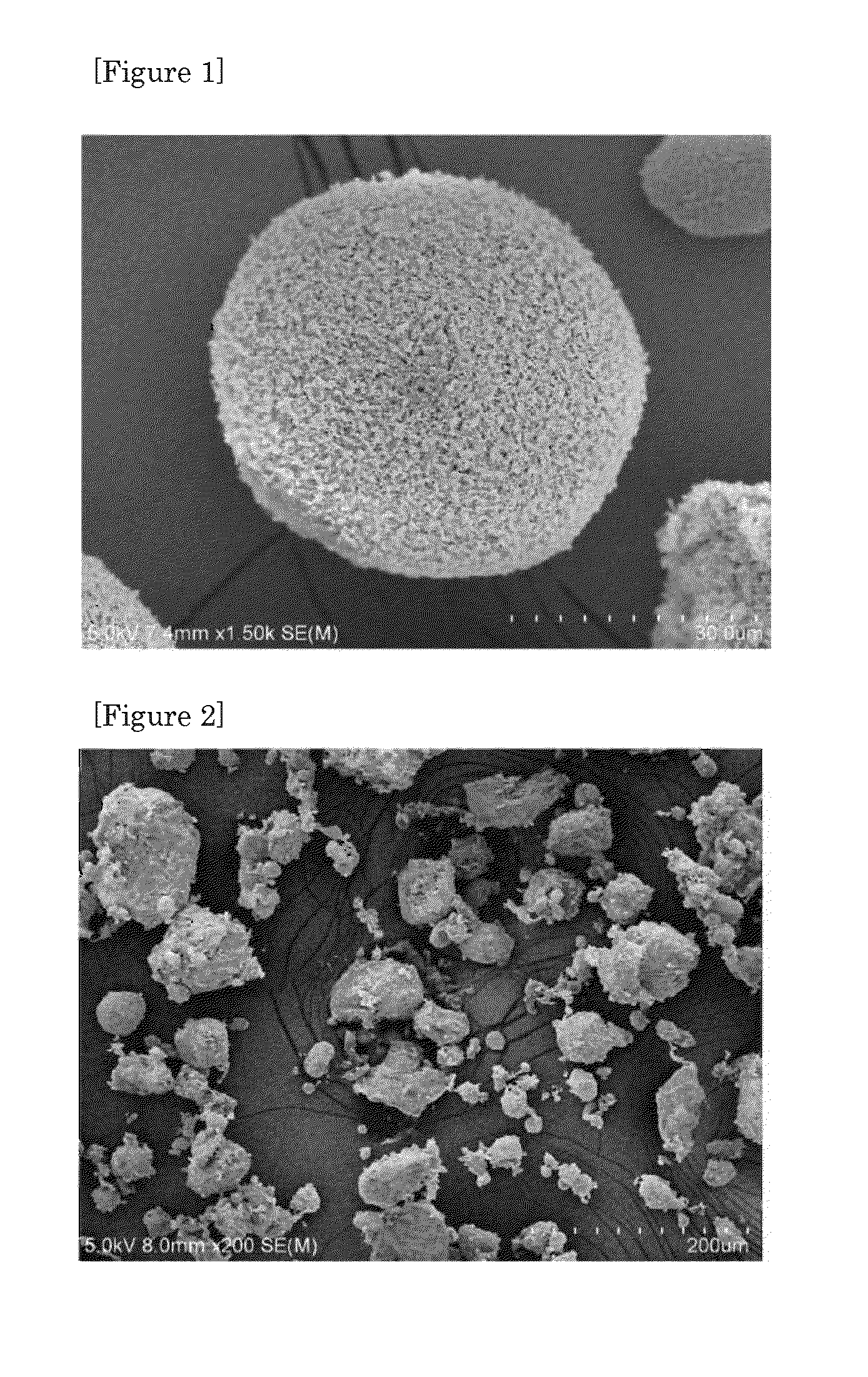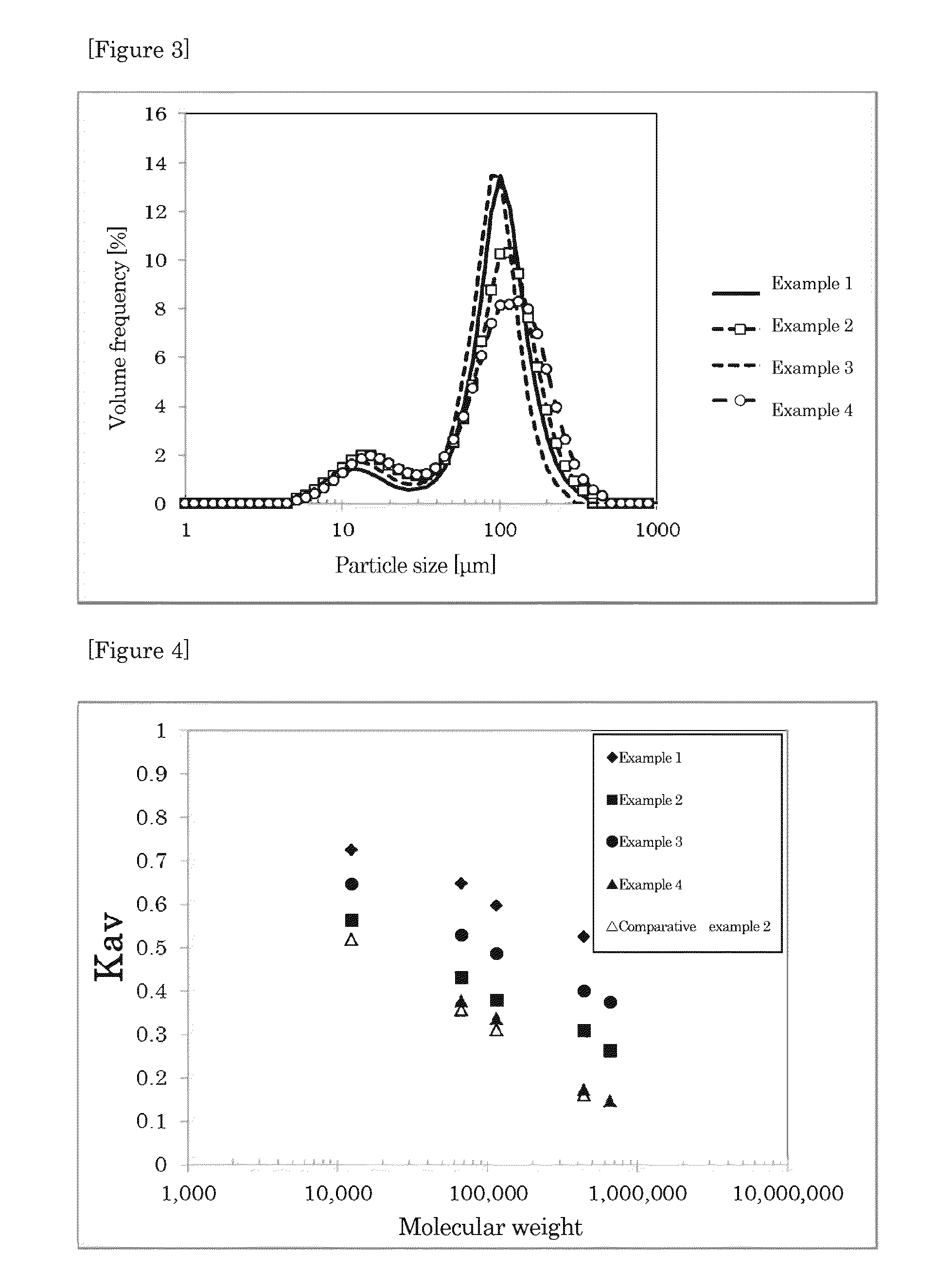Process for producing porous cellulose beads using alkali aqueous solution, carrier for ligand immobilization, and adsorbent
a technology of porous cellulose and alkali aqueous solution, applied in the direction of peptides, other chemical processes, separation processes, etc., can solve the problems of difficult handling in terms of corrosiveness and safety, high cost of ion liquid equipment, etc., to improve compressive strength, improve compressive strength, improve not only strength
- Summary
- Abstract
- Description
- Claims
- Application Information
AI Technical Summary
Benefits of technology
Problems solved by technology
Method used
Image
Examples
first embodiment
1. Improvement in Porous Cellulose Beads (First Embodiment)
(1) Cellulose Micro Dispersion
[0060]In process of the present invention (first embodiment), first, cellulose is mixed with an alkali aqueous solution to prepare a cellulose micro dispersion at low temperature. Retaining at low temperature contributes to producing excellent porous cellulose beads. In the micro dispersion preparing step, for example, cellulose is micro dispersed in an alkali aqueous solution of an alkali concentration of not more than 10 wt % and not less than 7.5 wt % (preferably not less than 8 wt %, particularly 9-8 wt %) at a temperature of about −5-10° C. (preferably 0° C.-4° C.). Alternatively, cellulose is mixed with an alkali aqueous solution so that the mixture (micro dispersion) has the alkali concentration and the temperature within the aforementioned ranges. Examples of the alkali aqueous solution include a sodium hydroxide aqueous solution and a potassium hydroxide aqueous solution.
[0061]The conce...
example 1
[0140]8.65 g of powdery cellulose (pharmacopoeia cellulose PH-F20JP available from Asahi Kasei Chemicals Corporation) was dispersed in 112 g of water, and retained at 4° C. Then, 35 g of 34.5 wt % sodium hydroxide (available from NACALAI TESQUE, INC.) aqueous solution was added and stirred to obtain a cellulose micro dispersion. After stirring for 20 minutes, 16 g of water was added so that the concentration of sodium hydroxide was 7.0 wt %, and the concentration of cellulose was 5.0 wt %, and the temperature was raised to 15° C., and thus a cellulose slurry was obtained. In 890 g of 1,2-dichlorobenzene at 15° C. containing 9.2 g of sorbitan monooleate, the obtained cellulose slurry was dispersed to form a cellulose droplet dispersion. The cellulose droplet dispersion was put into a cylindrical container having an inner diameter of 85 mm. A two-stage turbine blade having a blade diameter of 45 mm was used for stirring, and the interval of blades was set at 75 mm. The dispersion was ...
example 2
[0142]Porous cellulose beads were obtained in the same manner and conditions as in Example 1 except that the temperature of cellulose slurry was raised to 10° C. and the temperature of 1,2-dichlorobenzene was 10° C. As a result, a particle median diameter of the obtained beads was 91.4 μm. A crosslinking reaction was conducted in the same manner as in Example 1, and Kav was calculated. Kav value for the marker molecular weight of 12400 was 0.562, Kav value for the marker molecular weight of 67000 was 0.429, Kav value for the marker molecular weight of 115000 was 0.377, Kav value for the marker molecular weight of 440000 was 0.307, and Kav value for the marker molecular weight of 660000 was 0.261. The exclusion limit molecular weight calculated from these Kav values was 2.4×107.
PUM
| Property | Measurement | Unit |
|---|---|---|
| temperature | aaaaa | aaaaa |
| melting point | aaaaa | aaaaa |
| median particle diameter | aaaaa | aaaaa |
Abstract
Description
Claims
Application Information
 Login to View More
Login to View More - R&D
- Intellectual Property
- Life Sciences
- Materials
- Tech Scout
- Unparalleled Data Quality
- Higher Quality Content
- 60% Fewer Hallucinations
Browse by: Latest US Patents, China's latest patents, Technical Efficacy Thesaurus, Application Domain, Technology Topic, Popular Technical Reports.
© 2025 PatSnap. All rights reserved.Legal|Privacy policy|Modern Slavery Act Transparency Statement|Sitemap|About US| Contact US: help@patsnap.com



